|
Dear Colleague,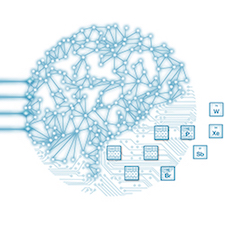
On Tuesday, July 9, Embedded Vision Alliance founder (and BDTI
co-founder and President) Jeff Bier will be a speaker at the 2019
AI Design Forum, taking place in San Francisco,
California. This year’s theme is “The Future of Computing – from
Materials to Systems,” and the event brings together leaders from
throughout the industry ecosystem – from materials to systems – who
will share their vision of the innovations that will propel the
industry into the next wave of growth. Other speakers (nearly all from
Alliance member companies) include:
- Aart de Geus, PhD, Chairman and co-Chief Executive
Officer,
Synopsys
- Lisa Su, PhD, President and CEO, AMD
- Victor Peng, President and CEO, Xilinx
- Gary Dickerson, President and CEO, Applied Materials
(event
sponsor)
- Cliff Young, PhD, Engineer, Google
- Renée St. Amant, PhD, Research Engineer in Emerging
Technologies and US Innovator of the Year, Arm
- PR (Chidi) Chidambaram, PhD, VP of Process Technology and
Foundry Engineering, Qualcomm
Registration
for the AI Design Forum also includes a SEMICON
West and
ES Design West Expo Pass. For more information and to register, please
see the event
page.
Brian Dipert
Editor-In-Chief, Embedded Vision Alliance
|
|
AI Is Moving to the Edge—What’s the Impact on the
Semiconductor Industry?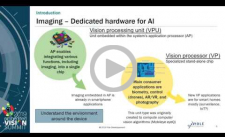
Artificial intelligence is proliferating
into numerous edge applications and disrupting numerous industries.
Clearly this represents a huge opportunity for technology suppliers.
But it can be difficult to discern exactly what form this opportunity
will take. For example, will edge devices perform AI computation
locally, or in the cloud? Will edge devices use separate chips for AI,
or will AI processing engines be incorporated into the main processor
SoCs already used in these devices? In this talk, Yohann Tschudi,
Technology and Market Analyst at Yole Développement, answers these
questions by presenting and explaining his firm’s market data and
forecasts for AI processors in mobile phones, drones, smart home
devices and personal robots. He explains why there is a strong trend
towards executing AI computation at the edge, and quantifies the
opportunity for separate processor chips and on-chip accelerators that
address visual and audio AI tasks.
Computer Vision Developer Survey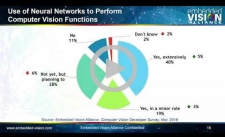
In this presentation from the Embedded
Vision Alliance’s March 2019 Silicon Valley Meetup, Alliance founder
Jeff Bier shares findings from the Alliance’s most recent survey of
developers about the software, processors and tools they use to build
systems and applications using computer vision and visual AI.
|
|
Improving and Implementing Traditional Computer Vision
Algorithms Using Deep Neural Network Techniques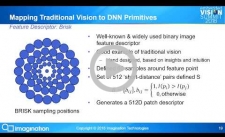
There has been a very significant shift in
the computer vision industry over the past few years, from traditional
vision algorithms to deep neural network (DNN) algorithms. Many
companies with experience and investment in classical vision algorithms
want to utilize DNNs without discarding their existing investments. For
these companies, can classical vision algorithms provide insights and
techniques to assist in the development of DNN-based approaches? In
this talk from the 2018 Embedded Vision Summit, Paul Brasnett, Senior
Research Manager for Vision and AI in the PowerVR Division at
Imagination Technologies, looks at the similarities between classical
and deep vision. He also looks at how a classical vision algorithm can
be expressed and adapted to become a trainable DNN. This strategy can
provide a low-risk path for developers transitioning from traditional
vision algorithms to DNN-based approaches.
Hybrid Semi-Parallel Deep Neural Networks – Example
Methodologies & Use Cases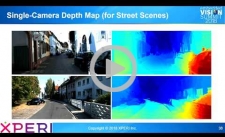
Deep neural networks (DNNs) are typically
trained on specific datasets, optimized with particular discriminating
capabilities. Often several different DNN topologies are developed
solving closely related aspects of a computer vision problem. But to
utilize these topologies together, leveraging their individual
discriminating capabilities, requires implementing each DNN separately,
increasing the cost of practical solutions. In this talk from the 2018
Embedded Vision Summit, Peter Corcoran, co-founder of FotoNation (now a
business unit of Xperi) and lead principle investigator and
director of C3Imaging (a research partnership between Xperi and the
National University of Ireland, Galway), develops a methodology to
merge multiple deep networks using graph contraction. The resultant
single network topology achieves a significant reduction in size over
the combined individual networks. More significantly, this merged
semi-parallel
DNN (SPDNN) can be re-trained across the combined datasets used to
train the original networks, improving its accuracy over the original
networks. The result is a single network that is more generic, but with
equivalent – or often enhanced – performance over a wider range of
input data. Examples of several problems in contemporary computer
vision are solved using SPDNNs. These include significantly improving
segmentation accuracy of eye-iris regions (a key component of iris
biometric authentication) and mapping depth from monocular images,
demonstrating equivalent performance to stereo depth mapping.
|
